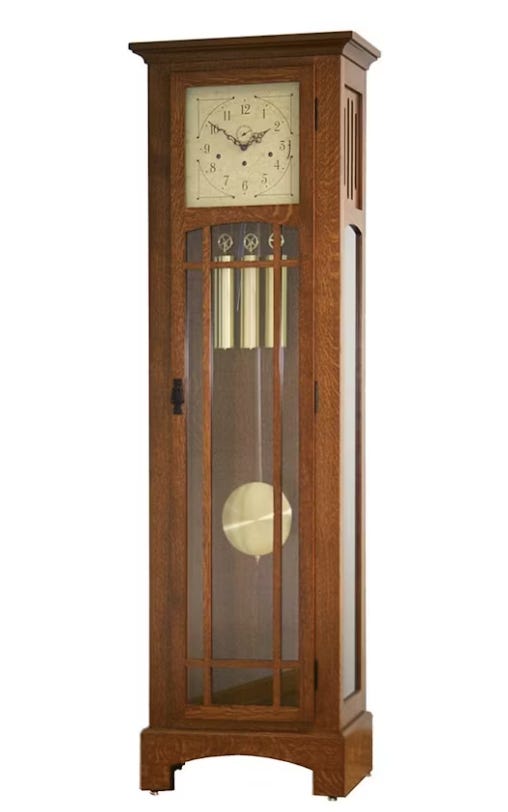Layers of Time
The pandemic disrupted the sensation of time continuity, and its various dimensions.
Things take the time they take. Don’t worry.
| Mary Oliver
The history of time is layered.
The oldest sundial was created in 1500 BCE in China. But they give an irregular and uncertain reading of time, because of the tilt of the Earth over the course of the year and the latitude where the sundial sits. Time was very fluid, then, almost as much as it was pre-sundial.

It wasn’t until Galileo discovered the properties of the pendulum in 1602 that pendulum-driven clocks could be engineered, making accurate timekeeping possible 50 years later. His insight was that the pendulum’s oscillation was determined not by its weight or the distance from the center point of its swing, but solely by the length of the pendulum. And they are resistant to changes in the pendulum’s period once set in motion.
Pendulum clocks — like Grandfather’s clocks — were the most accurate timepieces for almost 300 years.
In the modern era, however, the most accurate clocks are atomic clocks, which are so accurate that they only lose 1 second in 100 million years. But that doesn’t really pin time down.
Modern physics has brought back a new uncertainty to time. One aspect of Einstein’s theory of relativity is that time is influenced by gravity, so an atomic clock at the top of Mount Everest runs infinitesimally faster than one at sea level, where gravity is stronger. Atomic clocks are so accurate, you can measure the height of mountains in this way.
These observations only prove what we all have sensed intuitively: time is not passing at a constant pace. It’s all relative, and not just in the Einsteinian way. And the greatest factor in relativity is not the physics of timekeeping, but the fluidity of our human time sense.
In each of these eras — pre-Galileo, post-Galileo, and post-Einstein — our thinking about time has changed. And following the pandemic — which disrupted so much — our thinking about time, and our sense of time itself, were drastically altered.
A 2022 research study showed that so-called ‘temporal disintegration’ was greatly amplified during the pandemic, where people experienced distortions in perceived time:
Continuity between past experiences, present life and future hopes is critical to one’s well-being, and disruption of that synergy presents mental health challenges,” said corresponding author E. Alison Holman, UCI professor of nursing. “We were able to measure this in a nationally representative sample of Americans as they were experiencing a protracted collective trauma, which has never been done before. This study is the first to document the prevalence and early predictors of these time distortions.
So this is another slice through time, our shifting and messy perceptions of time. In the case of the pandemic, our sense of time was distorted, with some people feeling time was slowed while others thought time was racing. In either case, time was out of joint.
The philosopher Josef Pieper made a distinction between horizontal and vertical time. The former is the everyday experience of linear clock time: five workdays and two days of leisure time, for example, generally proceeding at a consistent pace (although weekends might be experienced as passing too fast and the workweek too long).
But Pieper also wrote of vertical time, which Jenny Odell says runs “at right angles to work” in Saving Time. She argues that to find true leisure, you need to step out of the horizontal time dimension, in which leisure exists only to refresh us to return to work.
Keep reading with a 7-day free trial
Subscribe to workfutures.io to keep reading this post and get 7 days of free access to the full post archives.

